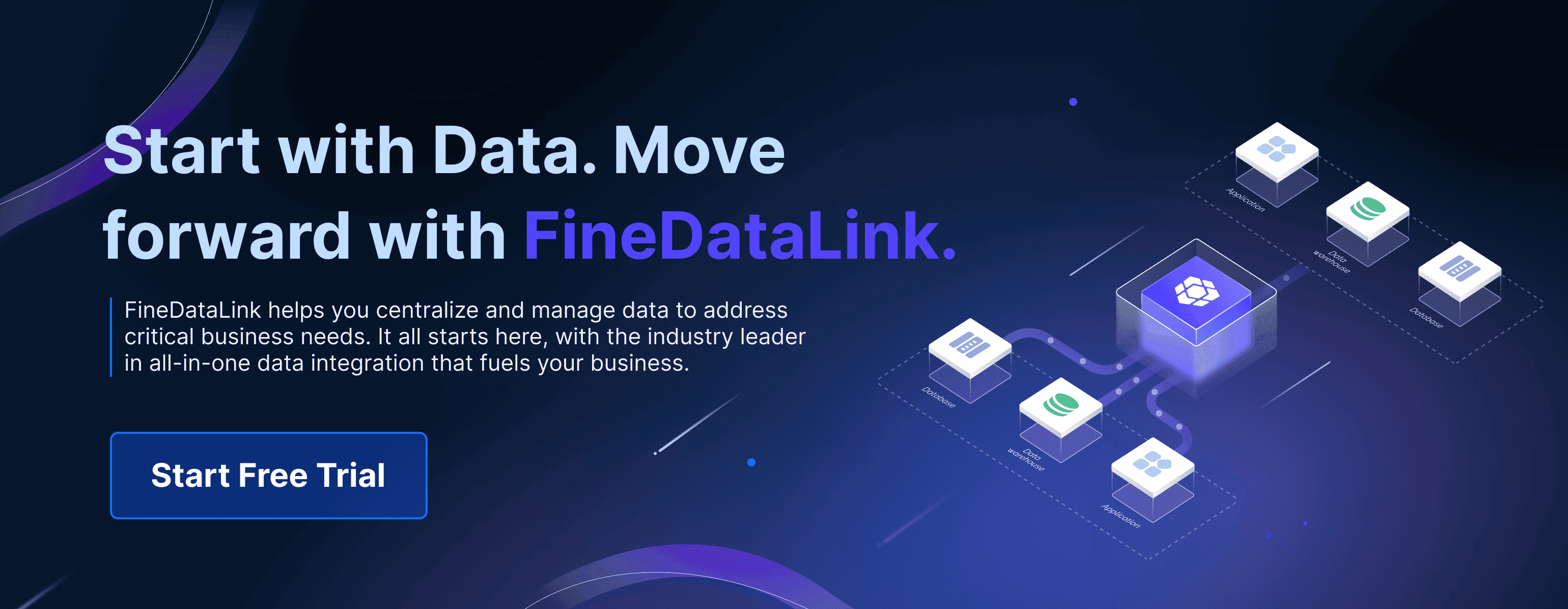Primary data refers to firsthand information gathered directly from the source for a specific purpose. You collect this data yourself, ensuring it aligns with your needs in Malaysia. It plays a crucial role in research and decision-making by offering accurate and relevant insights. Unlike secondary data, primary data provides you with unique perspectives that enhance reliability. In today’s fast-paced, data-driven world, using firsthand information helps you make informed choices and uncover opportunities others in Malaysia might overlook.
Key Takeaways
- Primary data is new information collected directly for a purpose.
- It is accurate and useful, making it important for research.
- You can control its quality, which lowers mistakes and unfairness.
- Collecting primary data takes time and money but is worth it.
- Ways to collect it include surveys, interviews, watching, and tests.
- Primary data gives special insights about customer likes and trends.
- Tools like FineDataLink make collecting and using primary data easier.
- Use primary data when you need clear, specific information for goals.
What is Primary Data?
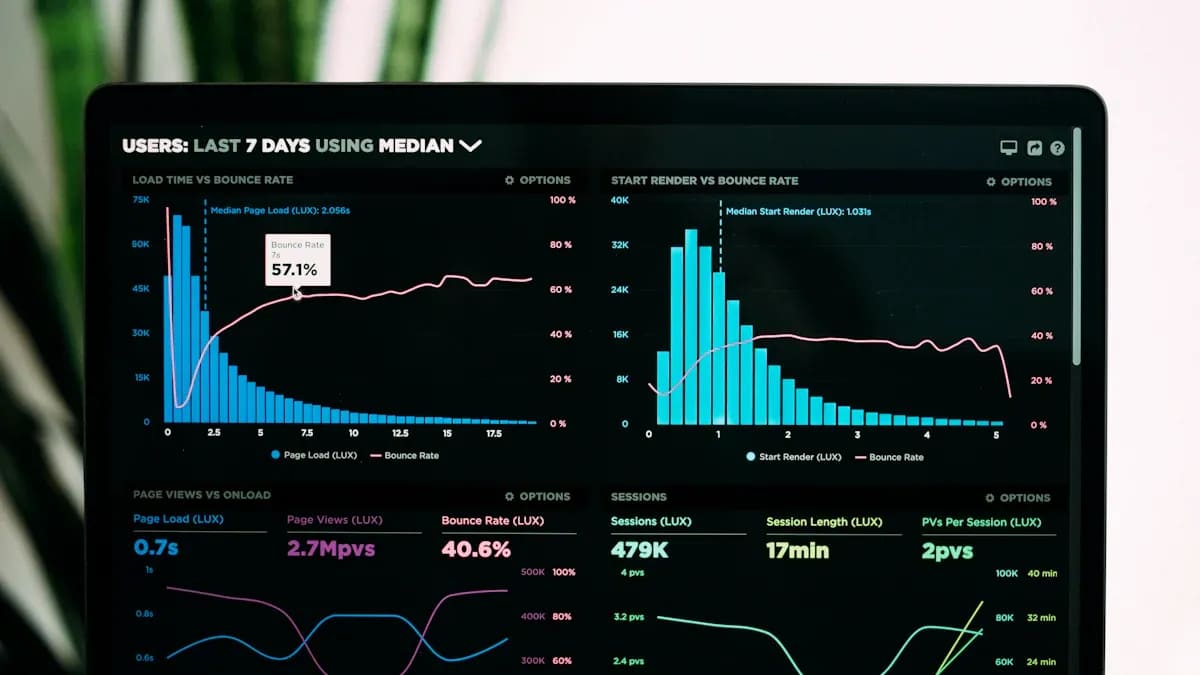
Definition of Primary Data
Primary data refers to information you collect directly from its original source. It is gathered specifically to address a particular question or solve a specific problem. Unlike secondary data, which is pre-existing and collected by others, primary data is unique and tailored to your needs in Malaysia. This type of data allows you to maintain control over the collection process, ensuring it aligns with your objectives.
Characteristics of Primary Data
Primary data stands out due to its unique features. First, it is highly specific and relevant to your research goals in Malaysia. You can design the data collection process to focus on the exact information you need. Second, you have complete control over the quality of the data. By overseeing the collection process, you can minimize errors and biases.
Another key characteristic is timeliness. Primary data reflects current conditions because you collect it in real-time. This ensures the information is up-to-date and aligned with the latest trends. Additionally, primary data offers flexibility. You can choose from various collection methods, such as surveys, interviews, or experiments, to gain a deeper understanding of your subject in Malaysia. Finally, primary data provides confidentiality and proprietary insights. The data you gather remains exclusive to you, giving you a competitive edge in Malaysia.
Here’s a table summarizing the benefits of collecting primary data:
| Benefit | Description |
|---|---|
| Specificity and Relevance | Tailored information that directly addresses research objectives and specific questions. |
| Control over Data Quality | Direct oversight of data collection ensures accuracy and minimizes errors and biases. |
| Timeliness and Up-to-Date Info | Data is collected in real-time, reflecting current conditions and trends. |
| Flexibility in Data Collection | Various methods can be employed, allowing for a comprehensive understanding of the research problem. |
| Confidentiality and Proprietary Insights | Unique data that provides a competitive advantage and ensures the confidentiality of sensitive information. |
Examples of Primary Data in Research and Business
You can find primary data in many areas of research and business in Malaysia. For instance, in Malaysia's academic research, surveys and experiments are common methods for gathering firsthand information. A researcher studying consumer behavior might conduct interviews to understand purchasing decisions.
In Malaysia's business, primary data plays a crucial role in decision-making. Companies in Malaysia often use focus groups to test new products or services. For example, a retail brand might organize a focus group to gather feedback on a new clothing line. Similarly, businesses in Malaysia use customer satisfaction surveys to improve their services. These examples of primary data highlight its importance in providing actionable insights tailored to specific needs.
Why is Primary Data Important?
Ensures Accuracy and Relevance
Primary data ensures that the information you gather is accurate and directly relevant to your goals in Malaysia. Since you collect it yourself, you can design the process to focus on specific questions or problems. This eliminates the risk of relying on outdated or irrelevant information. For example, if you want to understand customer preferences, conducting a survey allows you to ask targeted questions that align with your objectives in Malaysia.
Empirical research highlights how primary data enhances accuracy.
- It allows you to base decisions on real-world data.
- It helps you develop strategies that deliver measurable results.
- It enables you to test new ideas and apply them practically.
- It addresses unique challenges faced by specific groups or industries.
By collecting primary data, you gain control over the quality and relevance of the information, ensuring it meets your needs in Malaysia.
Supports Informed Decision-Making
Using primary data empowers you to make well-informed decisions. The insights you gather are tailored to your situation, helping you evaluate options and choose the best course of action. For instance, a company investigating remote work productivity might conduct an experiment. One group of employees works from home, while another works in the office. The results from this study provide clear evidence to guide decisions about remote work policies.
When you rely on primary data, you reduce uncertainty. The information reflects current conditions and specific contexts, making it a reliable foundation for decision-making. Whether you are launching a new product or improving a service, primary data ensures your choices are backed by facts.
Provides Unique Insights for Research and Business Intelligence
Primary data offers unique insights that secondary data cannot provide. It allows you to explore new trends, behaviors, and opportunities specific to your field in Malaysia. For example, businesses often use focus groups to test products before launching them. This firsthand feedback helps refine the product and ensures it meets customer expectations.
In research, primary data plays a vital role in uncovering new knowledge. By observing trends and analyzing behaviors, you can solve problems and improve future studies. These insights not only enhance your understanding but also give you a competitive edge in Malaysia.
When you use primary data, you gain exclusive information that others may not have. This advantage helps you stay ahead in a competitive environment in Malaysia and make strategic decisions with confidence.
Primary Data vs. Secondary Data
Definition of Secondary Data
Secondary data refers to information that others have already collected and made available for use. This type of data often comes from sources like government reports, academic studies, or market research databases. Unlike primary data, secondary data is not tailored to your specific needs in Malaysia. Instead, it provides a broader view of trends or patterns. For example, if you want to analyze industry growth, you might use published statistics or reports as secondary data. While secondary data is convenient and quick to access, it may lack the precision or relevance you need for specific goals in Malaysia.
Key Differences Between Primary and Secondary Data
Understanding the differences between primary and secondary data helps you choose the right approach for your needs in Malaysia. Primary data is raw data collected directly from the source. You control the process, ensuring the information is accurate and specific to your objectives in Malaysia. Secondary data, on the other hand, is pre-existing information gathered by others. It is often less reliable because it may be outdated or biased.
Here’s a comparison table to illustrate the differences:
| Aspect | Primary Data | Secondary Data |
|---|---|---|
| Accuracy | More accurate and reliable | Less reliable and accurate |
| Cost | Very expensive | Economical |
| Time Required | Long time to collect | Short time to collect |
| Specificity | Specific and up-to-date | May be outdated or irrelevant |
| Source Regulation | Collected directly from original source | Not regulated, subject to bias |
Primary data offers unmatched accuracy and relevance. You gather it yourself, ensuring it aligns with your goals. Secondary data, while cost-effective, may not provide the depth or specificity you need in Malaysia.
When to Use Primary Data vs. Secondary Data
Choosing between primary and secondary data depends on your objectives. If you need precise, original data for a unique problem, primary data is the better choice. For example, conducting surveys or interviews allows you to collect raw data tailored to your research in Malaysia. This approach works well for projects requiring detailed insights, such as customer feedback or product testing.
Secondary data is ideal when you need general information quickly. It saves time and resources, making it suitable for initial research or broad market analysis. For instance, if you want to understand industry trends in Malaysia, using published reports or statistics can provide a solid starting point.
You should use primary data when accuracy and specificity are critical. Secondary data works best for exploratory research or when resources are limited. By understanding the strengths of each, you can make informed decisions and achieve your goals effectively in Malaysia.
Methods of Collecting Primary Data
When you need firsthand information, choosing the right primary data collection method is essential. Each method offers unique advantages and challenges, depending on your goals and resources. Below, you'll find an overview of some of the most common methods.
Surveys
Surveys are one of the most popular ways to gather primary data. They allow you to collect information from a large group of people efficiently. By designing clear and concise questions, you can gain valuable insights into opinions, behaviors, or preferences in Malaysia.
Online Surveys
Online surveys are a fast and cost-effective way to reach a broad audience. You can distribute them through email, social media, or specialized survey platforms in Malaysia. These surveys are ideal for collecting quantitative data, such as customer satisfaction scores or product feedback. However, they may miss responses from individuals without internet access.
Paper-Based Surveys
Paper-based surveys involve distributing printed questionnaires. These are useful in settings where internet access is limited or unavailable. For example, you might use them in rural areas or during in-person events. While they provide reliable data, they require more time and resources to distribute and analyze.
| Method | Description | Advantages/Disadvantages |
|---|---|---|
| Online Surveys | Most common method for collecting quantitative data. | Quick data collection, but may miss harder-to-reach respondents. |
| Offline Surveys | Involves postal questionnaires or telephone surveys. | Takes longer and can be expensive, but still provides aggregated numeric data. |
Interviews
Interviews allow you to gather detailed and personal insights. By speaking directly with participants, you can explore their thoughts and experiences in depth. This method is particularly useful when you need qualitative data.
Structured Interviews
Structured interviews follow a set list of questions. This approach ensures consistency and makes it easier to compare responses. For example, you might use structured interviews to evaluate job candidates or gather feedback on a new product.
Unstructured Interviews
Unstructured interviews are more flexible. Instead of sticking to a script, you can adapt your questions based on the conversation. This method helps you uncover unexpected insights but requires strong communication skills to guide the discussion effectively.
| Method | Strengths | Limitations |
|---|---|---|
| Surveys | Efficient for broad data collection; allows for statistical analysis. | Poorly designed questions can lead to response bias; low response rates may affect reliability. |
| Interviews | Provide rich, detailed data; allow for clarification and exploration of insights. | Time-consuming; responses may be influenced by interviewer bias or reluctance to share sensitive information. |
Observations
Observations involve watching and recording behaviors or events as they happen. This method is ideal for studying actions in their natural context. It provides valuable insights into how people behave rather than what they say.
Participant Observation
In participant observation, you actively engage in the activity you're studying. For instance, if you're researching customer experiences in a store, you might pose as a shopper to observe interactions firsthand. This approach helps you gain a deeper understanding of the environment of Malaysia.
Non-Participant Observation
Non-participant observation involves observing from a distance without interfering. This method works well when you want to avoid influencing the behavior of those you're studying. For example, you might watch how customers navigate a store to identify areas in Malaysia for improvement.
| Method | Description | Advantages/Disadvantages |
|---|---|---|
| Interviews | Can be structured for quantitative data collection. | Engaging for respondents, but may lack anonymity for sensitive topics. |
| Observations | Focuses on counting behaviors and actions in a structured manner. | Provides numeric data on specific actions, but requires careful judgment from the observer. |
By understanding these primary data collection methods, you can choose the one that best fits your research needs in Malaysia. Whether you use surveys, interviews, or observations, each method offers unique opportunities to gather valuable insights.
Experiments
Experiments are powerful tools for collecting primary data. They allow you to test hypotheses and observe outcomes in controlled environments. By manipulating variables, you can uncover cause-and-effect relationships that provide valuable insights.
Field Experiments
Field experiments take place in real-world settings. You conduct them outside of a laboratory to observe how variables interact in natural environments. For example, if you want to study customer behavior, you might test different store layouts to see which one increases sales. Field experiments offer practical insights because they reflect actual conditions.
Advantages of field experiments include their relevance and applicability. They help you understand how theories work in real-life scenarios. However, external factors like weather or unexpected events can influence results. To minimize these effects, you should carefully plan and monitor the experiment.
Laboratory Experiments
Laboratory experiments occur in controlled settings. You design them to eliminate external influences and focus solely on the variables you want to study. For instance, if you want to test how lighting affects productivity, you can adjust the brightness in a lab and measure participants' output.
The main advantage of laboratory experiments is precision. You control every aspect of the environment, ensuring accurate results. This method is ideal for studying specific factors without interference. However, laboratory experiments may lack real-world applicability. Participants might behave differently in artificial settings compared to natural environments.
| Type of Experiment | Description | Advantages | Limitations |
|---|---|---|---|
| Field Experiments | Conducted in real-world settings | Reflects actual conditions | External factors may affect results |
| Laboratory Experiments | Conducted in controlled environments | High precision and accuracy | May lack real-world applicability |
Focus Groups
Focus groups are small, interactive discussions that help you gather primary data. You bring together participants in Malaysia to share their opinions, experiences, or ideas on a specific topic. This method is particularly useful for exploring attitudes and preferences.
Benefits of Focus Groups
Focus groups provide rich, qualitative insights. They allow you to understand how people think and feel about a subject. For example, if you’re launching a new product, a focus group can reveal customer expectations and potential challenges.
Another benefit is the dynamic interaction among participants. Group discussions often spark ideas that wouldn’t emerge in individual interviews. You can observe body language and group dynamics, which add depth to the data.
Focus groups are also flexible. You can adapt questions based on the discussion, making it easier to explore unexpected topics. This method is ideal for brainstorming and refining concepts.
Challenges of Focus Groups
Despite their benefits, focus groups have limitations. Group dynamics can sometimes lead to biased results. Dominant participants may influence others, reducing the diversity of opinions. To address this, you should moderate discussions carefully and encourage equal participation.
Another challenge is the small sample size. Focus groups typically involve fewer participants than surveys, which limits the generalizability of the findings. They also require skilled moderators and a suitable environment, which can increase costs.
| Aspect | Benefits | Challenges |
|---|---|---|
| Interaction | Encourages dynamic discussions | Dominant participants may bias results |
| Depth of Insights | Provides rich qualitative data | Limited generalizability due to small sample size |
| Flexibility | Allows adaptation during discussions | Requires skilled moderation and setup |
Focus groups are valuable for exploring ideas and gaining detailed feedback. By addressing their challenges, you can maximize their effectiveness as a primary data collection method.
Advantages and Disadvantages of Primary Data
Advantages
High Accuracy and Relevance
One of the key advantages of primary data is its accuracy. Since you collect the data yourself, you can ensure it directly addresses your research question. This level of precision makes primary data highly reliable. For example, if you are studying customer preferences, you can design your survey to focus on specific products or services. This approach eliminates the risk of using outdated or irrelevant information.
Another benefit is relevance. Primary data is collected in real-time, reflecting current trends and conditions. This ensures the information aligns with your objectives. Whether you are conducting market research or academic studies, primary data provides insights that are both timely and actionable.
Tailored to Specific Needs
Primary data is unique because it is tailored to your specific needs in Malaysia. You have complete control over the data collection process, allowing you to focus on the variables that matter most. For instance, if you want to understand employee satisfaction, you can create a questionnaire that targets specific workplace factors.
This customization ensures the data is not only relevant but also detailed. You can choose the method that best suits your goals in Malaysia, such as interviews, surveys, or experiments. This flexibility allows you to gather comprehensive insights that secondary data cannot provide.
Disadvantages
Time-Consuming
Collecting primary data often requires a significant amount of time. You need to plan the process, design the tools, and gather responses. For example, conducting interviews or organizing focus groups can take weeks or even months. This lengthy process can delay decision-making, especially if you are working on a tight schedule.
Longitudinal studies, which track changes over time, are particularly time-intensive. They require consistent effort and monitoring, making them challenging to manage. While the results are valuable, the time investment can be a major drawback.
Costly to Collect
Another disadvantage of primary data is its cost. Designing surveys, hiring researchers, and analyzing results can be expensive. For example, if you are conducting a nationwide survey, you may need to invest in travel, printing, or digital tools. These expenses can add up quickly, especially for small businesses or individual researchers in Malaysia.
Accessing certain populations can also increase costs. For instance, reaching remote communities or specialized groups may require additional resources. These challenges make primary data collection a costly endeavor, particularly when compared to secondary data.
Here’s a table summarizing the advantages and challenges of collecting primary data:
| Advantages | Challenges |
|---|---|
| Relevance: Data is directly related to the research question. | Time-consuming: Primary data collection is often a lengthy process. |
| Specificity: Data is tailored to specific variables of interest. | Expensive: Costs can be high due to various factors involved. |
| Access difficulties: Gaining access to certain populations can be challenging. | |
| Lengthy time frames: Data collection can take a long time, especially for longitudinal studies. |
Understanding the advantages of primary data, such as its accuracy and relevance, helps you appreciate its value. However, being aware of its disadvantages, like time and cost, allows you to plan effectively and make informed decisions about your research approach in Malaysia.
Practical Applications of Primary Data in Business Intelligence
Business Decision-Making with FineDataLink
Primary data plays a crucial role in business decision-making, especially when paired with tools like FineDataLink. This platform simplifies data integration, enabling you to collect and analyze data from multiple sources in real-time. For instance, if your company in Malaysia wants to improve customer satisfaction, you can use FineDataLink to synchronize survey results across various departments. This ensures that all teams have access to the latest insights, helping them make informed decisions.
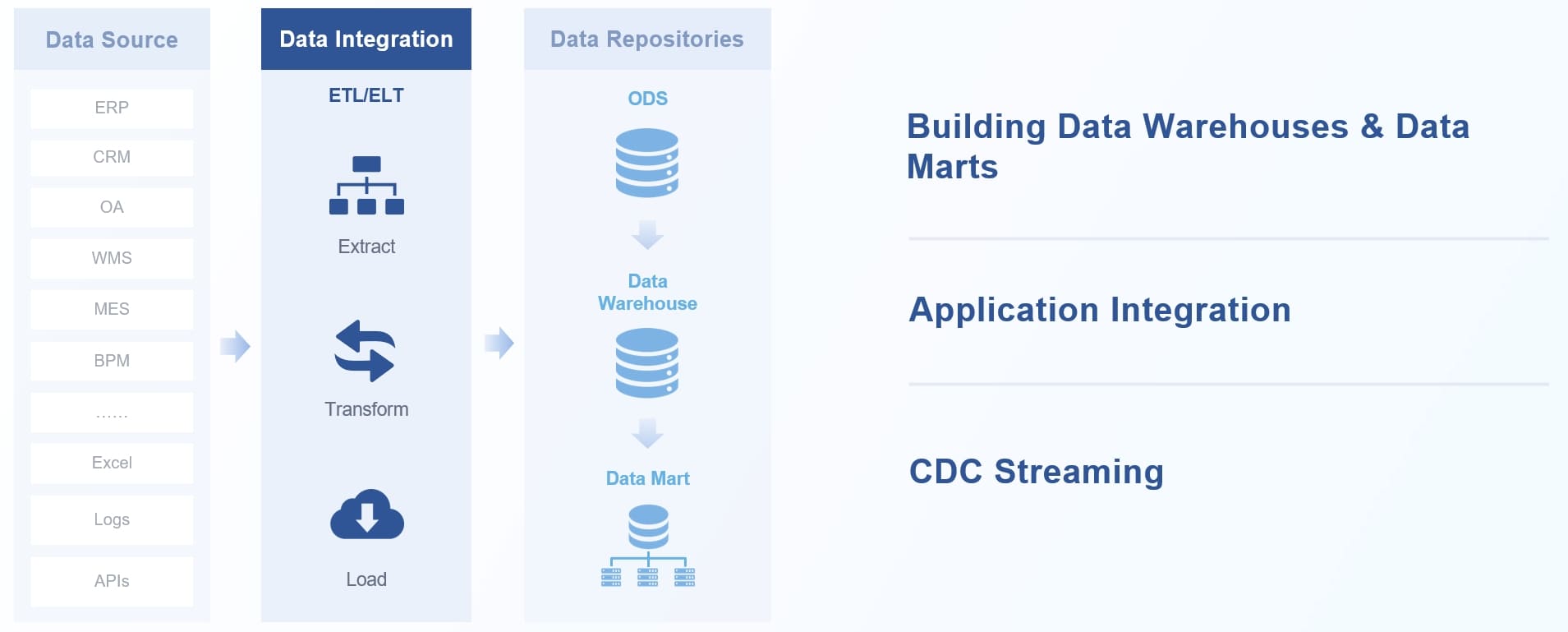
FineDataLink also supports advanced ETL (Extract, Transform, Load) processes. These processes allow you to preprocess primary data, ensuring it is clean and ready for analysis. For example, a retail company might use FineDataLink to integrate sales data from different stores. By analyzing this data, you can identify trends, optimize inventory, and enhance customer experiences. The platform’s low-code interface makes it accessible even if you lack extensive technical expertise.
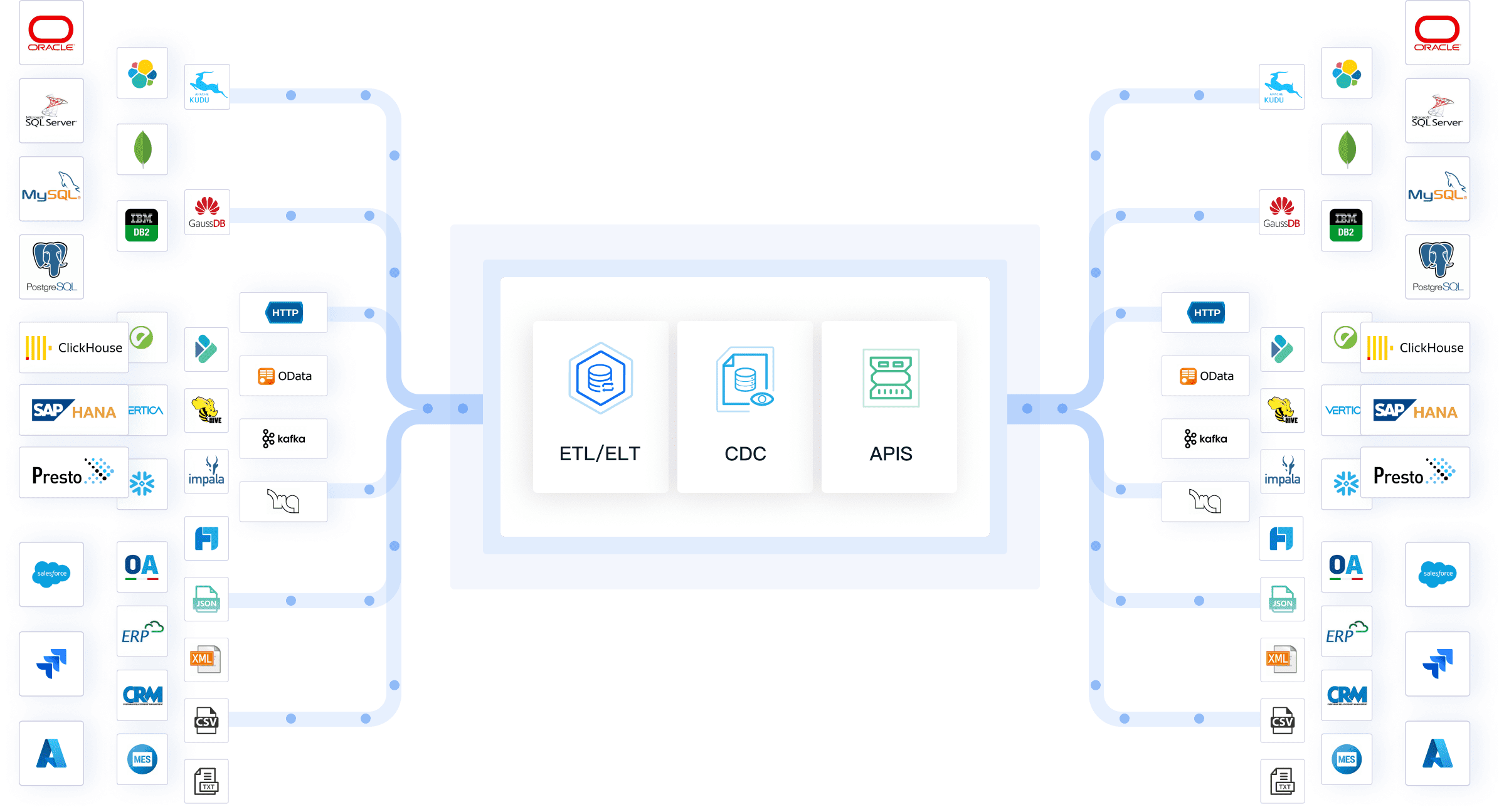
Academic Research and Policy Development
In academic research, primary data provides the foundation for groundbreaking studies. Researchers often collect data through experiments, surveys, or interviews to explore new theories or validate existing ones. For example, a university might conduct a study on the effectiveness of online learning. By gathering feedback from students and teachers, researchers can identify challenges and propose solutions.
Policy development also relies heavily on primary data. Governments and organizations use it to address societal issues. For instance, public health officials might collect data on vaccination rates to design effective campaigns. This data ensures that policies are based on current conditions, making them more impactful.
Enhancing Data Integration with FanRuan Solutions
FanRuan solutions, such as FineDataLink, enhance the integration of primary data across various systems. This capability is essential for businesses dealing with data silos or complex formats. FineDataLink supports over 100 data sources, allowing you to combine information from diverse platforms seamlessly.
The platform’s real-time synchronization feature ensures that your data remains up-to-date. For example, a logistics company can use FineDataLink to track shipments across multiple regions. By integrating this data, you can monitor performance, address delays, and improve customer satisfaction.

Here’s a table showcasing real-world examples of primary data applications in business intelligence:
| Case Study | Company | Description | Results |
|---|---|---|---|
| Popl | Digital business cards | Utilized primary data to enhance customer engagement. | 20% increase in follow-up success rates. |
| Green Earth Landscaping | Landscaping services | Collected customer reviews using Google Review business cards. | Tripled reviews and improved rating to 4.8. |
| Café Bliss | Café | Gathered customer feedback through Google Review business cards. | 150% increase in reviews, boosting foot traffic by 20%. |
| Warby Parker | Eyewear retailer | Used primary data to inform leadership structure. | Enhanced organizational culture and teamwork. |
| TOMS | Footwear company | Collected customer feedback to develop a socially responsible business model. | Significant business growth and improved brand reputation. |
These examples highlight how primary data, when integrated effectively, can drive business intelligence and foster innovation.
Primary data serves as the foundation for accurate and relevant insights. It provides firsthand information tailored to your specific needs, ensuring reliability in research and decision-making. Unlike secondary data, which is pre-collected and often generalized, primary data offers precision and exclusivity. By using tools like FineDataLink, you can streamline the integration of this data, making it actionable and accessible. This empowers you to make informed decisions that drive success in both research and business in Malaysia.
Click the banner below to try FineDataLink for free and empower your enterprise to transform data into productivity!
Continue Reading About Primary Data
What Are the Best Big Data Software Tools for Businesses in 2025?
Secondary Data Analysis: Why It’s a Game-Changer!
FAQ
What is the main difference between primary and secondary data?
Primary data is information you collect directly for a specific purpose. Secondary data is pre-existing information gathered by others. Primary data offers accuracy and relevance, while secondary data provides convenience and broader insights.
Why is primary data more reliable than secondary data?
You control the collection process for primary data, ensuring accuracy and relevance. Secondary data may be outdated or biased since it was collected for different purposes.
How can you collect primary data efficiently?
Use tools like FineDataLink to streamline data collection. It integrates data from multiple sources in real-time, saving time and ensuring accuracy. Online surveys and structured interviews are also efficient methods.
When should you choose primary data over secondary data?
Choose primary data when accuracy and specificity are critical. For example, use it for customer feedback, product testing, or unique research questions. Secondary data works better for general trends or exploratory research.
What are the challenges of collecting primary data?
Primary data collection can be time-consuming and costly. Designing surveys, conducting interviews, or organizing focus groups requires planning and resources. However, the insights gained are often worth the effort.
Can primary data be used with secondary data?
Yes, combining both types enhances your analysis. Use secondary data for context and primary data for specific insights. This approach provides a comprehensive understanding of your research topic.
How does FineDataLink improve primary data integration?
FineDataLink simplifies data integration with real-time synchronization and advanced ETL processes. It supports over 100 data sources, ensuring seamless data flow. This makes your primary data actionable and accessible for decision-making.
What are some examples of primary data in business?
Examples include customer satisfaction surveys, focus groups for product testing, and experiments to study consumer behavior. These methods provide actionable insights tailored to your business needs.

The Author
Howard
Data Management Engineer & Data Research Expert at FanRuan
Related Articles

7 Best Data Lake Solutions for Modern Enterprises in 2025
Compare the best data lake solutions for 2025 to boost enterprise scalability, security, and analytics. See which platforms fit your business needs.
Howard
Nov 28, 2025

7 Essential Big Data Best Practices to Succeed in 2025
Apply these 7 big data best practices for 2025 to boost data quality, security, and scalability, ensuring your organization stays competitive and compliant.
Howard
Nov 17, 2025
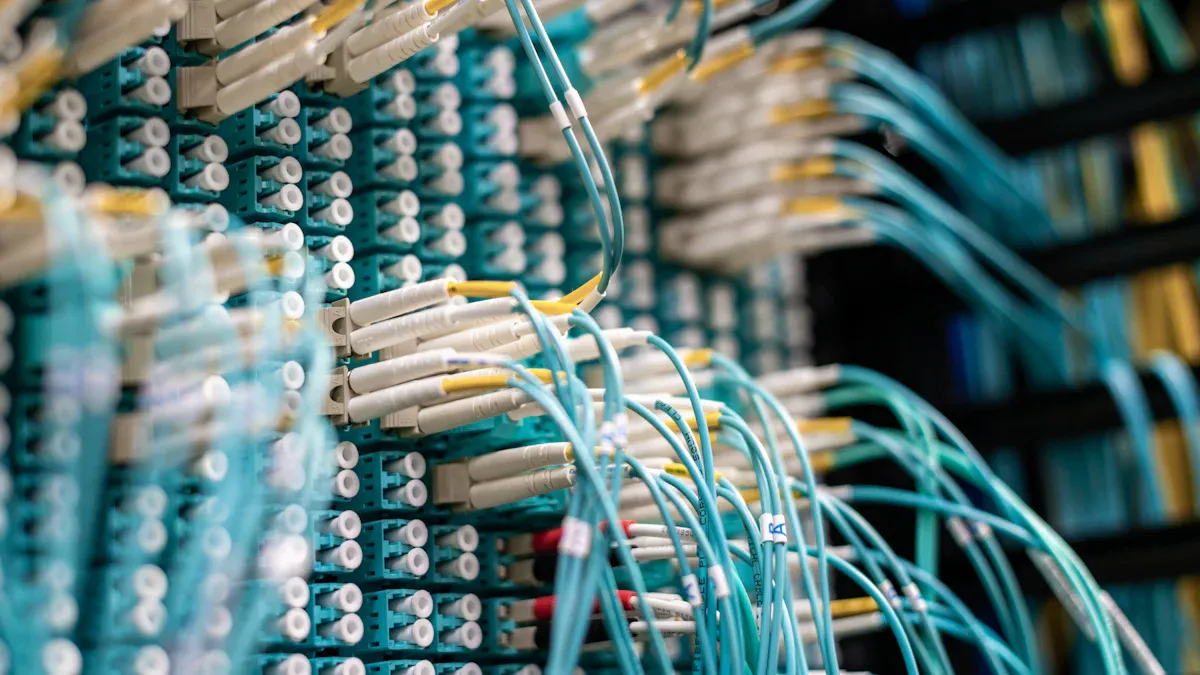
Understanding Enterprise Data Centers in 2025
An enterprise data center is a facility owned by one company to store, process, and secure its business data and IT systems.
Howard
Sep 30, 2025
